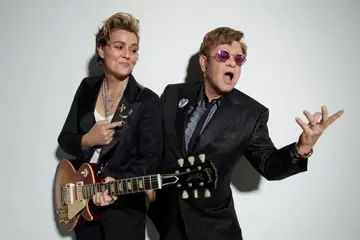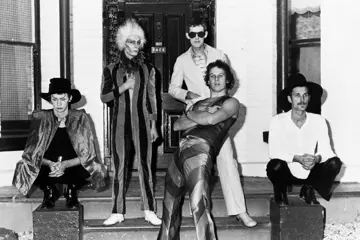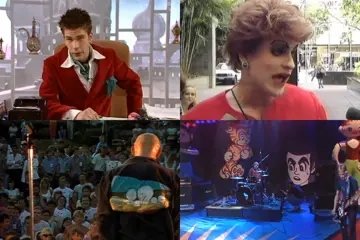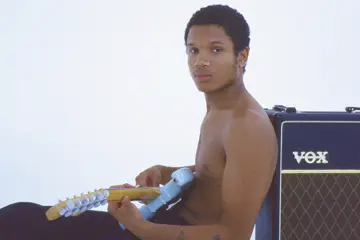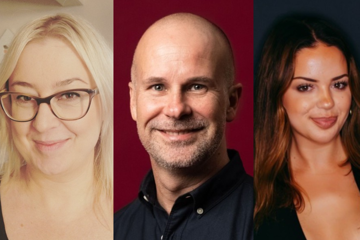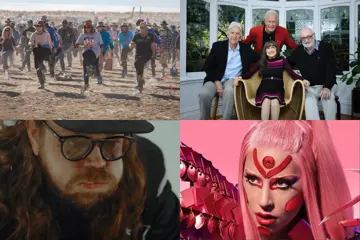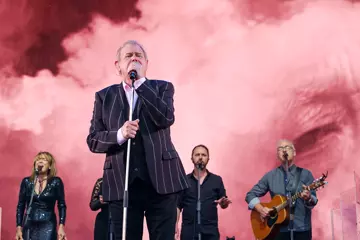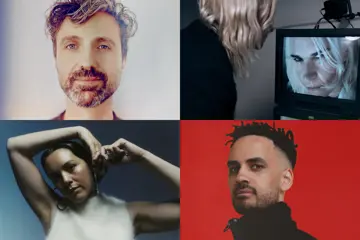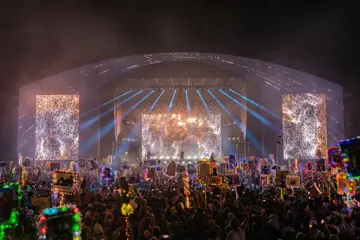Quantum mechanics and performance theatre seem like rather disparate fields of interest, and the idea of combining the two is more than baffling. For David Clarkson, however, looking at a future where humans creatively engage with the technology at hand was as simple as looking back in time to a fork in the road on his career path. What resulted was a new creative perspective and practice, and his new work, Encoded.
“It stretched me sideways,” Clarkson says of the technologically driven Encoded, which utilises, among other things, infrared tracking, photogrammetry (in which 3D models are built from photographs), digital instillations, and virtual costumes, “But also years ago when I was at university I started off studying astrophysics and I've always had a strong interest in quantum mechanics, and at a theoretical level that was my great interest and then I actually went, 'This isn't what I want to do, what I would like to do is live performance,' so I made a huge career shift and then haven't really looked back at that world professionally, but in some ways I can grapple with it fine. It's just been a challenge, but it's been a great challenge,” says Roseman.
With a history in physical performance that has seen him work on productions as large scale and human as the opening ceremony for the 2000 Sydney Olympics, it was a recent work, 2009's Mirror Mirror, in which fibreglass masks for the performers' bodies that marked a shift in Clarkson's creative approach, one which lead him to Encoded, and what's to come.
“So the whole idea of a mask in traditional performance sense, which is a mask of the face, I kind of went, 'Well, what happens if you mask the body, not the face? What does that do? What kind of animation do you get from the performers in a live sense?'” Clarkson elaborates on his intentions with Mirror Mirror. “So then I extended that idea to not just mapping or masking the body, but if we map or mask the architecture or the performance space where the performer is performing, how does that change our sense of reality?”
“It's really exciting and in some ways it's spawned a new body of work for me, so my next work will continue this thread,” Clarkson reveals. Working with technology, I take a kind of all or nothing approach, I've always been a bit of a luddite in as much as my practice has been body lead or physically lead,” explains a modest Clarkson, “and so I decided that it was time for a shake up and what it's done is it has moved me in a very heady sense, solidly into the technical world, but what it's opened up is a new type of canvas and a new way of working in the theatre and on stage.
“I've got a piece that I'm starting to develop based around genetics because, as you know, the human genome is starting to head towards being fully coded and now you can take your own genes, that test 23+me, where you can get a full code breakdown of your genetic structure. So the next step with Encoded for me, or the body of work around Encoded, is to actually look at human coding and ask questions around that using some of the technologies I'm using at the moment.”
WHAT: Encoded
WHERE & WHEN: Wednesday 28 November to Saturday 1 December, Track 12 Carriageworks

